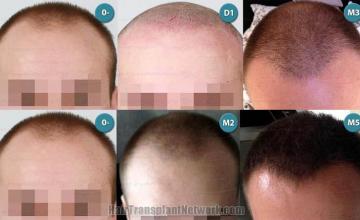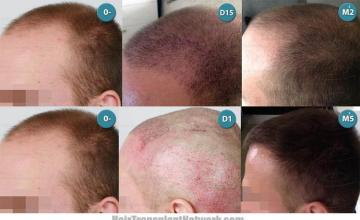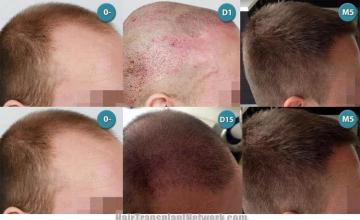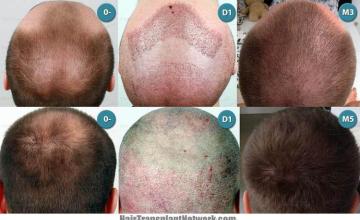Procedure detail
For some years, a list has been created explaining the different best doctors’ FUE skills.
As far as I am concerned, I often read that if a patient is looking for the best in the FUT, I am the Doctor but regarding the FUE, the level would be inferior.
I am introducing here under a case which, I hope, will change definitively this absurd and inappropriate rankings.
*
This is my FUE experience:
*
My first interest in FUE was during the ISHRS Annual Meeting in Sydney in 2005 (9 years ago).
Then, in 2005, I went to US to observe and be initiated into manual FUE technique.
In 2006, I attended Dr James Harris’ meeting.
Back in Belgium, I worked in collaboration with Dr Patrick Mwamba (manual FUE) during two years.
Since 2009, I have developed a motorized system characterized by a very high sensitivity of the pedal. Thanks to this system, I can obtain the same precision as the manual system.
For some years, I have been developing my own range of punches too.
Their softened design allows reducing drastically the transection level.
On an international level, I am considerably recognized by my peers for my FUE skills.
Some examples:
I have been chosen to take part to a limited group of 20 persons: the ISHRS FUE Research Committee.
I am in charge of a research regarding the consequence of the transections.
In 2013, I was part of the Faculty at the 2nd FUE Mediterranean workshop in Madrid hosted by Dr Lorenzo. I was in charge of several lectures and a surgical demonstration.
Recently, I have been chosen among a twenty of so worldwide specialists to redact a chapter in a book exclusively dedicated to FUE which will be published in 2015. My chapter is about the best ways to promote the quality of the technique.
During the next ISHRS Annual Meeting, in Kuala Lumpur, in October 2014, I have three interventions regarding the FUE including a lesson with demonstrations and learning for beginners and another one regarding the best medical instrumentation to use in FUE.
In 2015, I will be part of the Faculty of the workshop organized by the Indian Society of Hair Restoration Surgeons. This workshop will be exclusively dedicated to the FUE.
Regarding the patient of my post:
He has his surgery performed in January 2014, we are at 6 months post-operative.
His surgery took place in two days: 4205 FUE grafts for 9750 hair (details: 629 FUE1, 1881 FUE2, 1419 FUE3, 275 FUE4).
His current result is simply astounding.
After only six months, his donor area has recovered an almost normal aspect and density.
Bald class

Norwood stage 5
Occurs when the connecting bridge of hair disappears leaving a single large bald area on the front and top of the scalp. The hair on the sides of the scalp remains relatively high.




